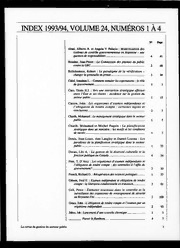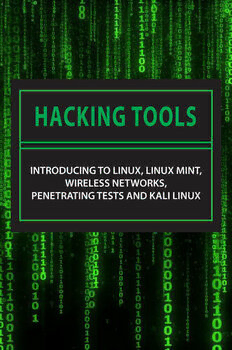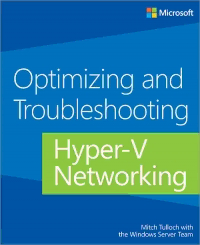
Optimizing and Troubleshooting Hyper-V Networking PDF
Preview Optimizing and Troubleshooting Hyper-V Networking
spine = .35” I n Introducing Windows 8 t r o d u c An Overview for IT Professionals i n g W i n Get a head start evaluating Window 8—guided by a Windows Note d expert who’s worked extensively with the software since the o This title is also available as a free eBook w preview releases. Based on final, release-to-manufacturing (RTM) on the Microsoft Download Center s software, this book introduces new features and capabilities, with (microsoft.com/download) 8 scenario-based insights demonstrating how to plan for, implement, Optimizing and and maintain Windows 8 in an enterprise environment. Get the high-level information you need to begin preparing your A deployment now. n About the Author O Jerry Honeycutt is an expert on Windows Topics include: v technologies and administration. He has e • Performance, reliability, and security features written more than 25 books, including rv Troubleshooting • Deployment options Microsoft Windows Desktop Deployment ie • Windows Assessment and Deployment Kit Resource Kit. w • Windows PowerShell™ 3.0 and Group Policy f o • Managing and sideloading apps r microsoft.com/mspress • Internet Explorer® 10 IT • Virtualization, Client Hyper-V®, and Microsoft® Desktop P Optimization Pack r o • Recovery features f e Hyper-V s s i o Also see n a l s Networking ISBN: 9780735666139 ISBN: 9780735673229 ISBN: 9780735663817 Coming Soon ISBN: 978-0-7356-7050-1 U.S.A. $14.99 Canada $15.99 Mitch Tulloch with [Recommended] Operating Systems/ the Windows Server Team Windows www.it-ebooks.info PUBLISHED BY Microsoft Press A Division of Microsoft Corporation One Microsoft Way Redmond, Washington 98052-6399 Copyright 2013 © Mitch Tulloch with the Windows Server Team All rights reserved. No part of the contents of this book may be reproduced or transmitted in any form or by any means without the written permission of the publisher. Library of Congress Control Number (PCN): 2013938862 ISBN: 978-0-7356-7900-9 Printed and bound in the United States of America. First Printing Microsoft Press books are available through booksellers and distributors worldwide. If you need support related to this book, email Microsoft Press Book Support at mspinput@microsoft.com. Please tell us what you think of this book at http://www.microsoft.com/learning/booksurvey. Microsoft and the trademarks listed at http://www.microsoft.com/about/legal/en/us/ IntellectualProperty/Trademarks/EN-US.aspx are trademarks of the Microsoft group of companies. All other marks are property of their respective owners. The example companies, organizations, products, domain names, email addresses, logos, people, places, and events depicted herein are fictitious. No association with any real company, organization, product, domain name, email address, logo, person, place, or event is intended or should be inferred. This book expresses the author’s views and opinions. The information contained in this book is provided without any express, statutory, or implied warranties. Neither the authors, Microsoft Corporation, nor its resellers, or distributors will be held liable for any damages caused or alleged to be caused either directly or indirectly by this book. Acquisitions Editor: Anne Hamilton Developmental Editor: Karen Szall Project Editor: Editorial Production: Jean Trenary Technical Reviewer: Copyeditor: Megan Smith-Creed Indexer: Cover: www.it-ebooks.info Contents Introduction ............................................................................................................................. 6 Hyper-V networking tips ..................................................................................................... 11 Best practices ..................................................................................................................................................... 11 VLAN concepts and troubleshooting ....................................................................................................... 12 MAC addresses and virtual guests ............................................................................................................ 13 Network card drivers ...................................................................................................................................... 14 Example: Intel Teaming NIC driver and VMQ ...................................................................................... 15 Monitoring network performance ..................................................................................... 16 Physical network adapters ............................................................................................................................ 21 Virtual network adapters ............................................................................................................................... 21 Virtual switch...................................................................................................................................................... 22 Virtual switch ........................................................................................................................ 28 System event log .............................................................................................................................................. 29 Performance counters .................................................................................................................................... 30 Diagnostic event log and packet capture .............................................................................................. 30 Packet capture within vmswitch................................................................................................................. 31 Port mirroring ....................................................................................................................... 34 MAC addresses ...................................................................................................................... 38 Duplicate MAC addresses ............................................................................................................................. 39 MAC address behavior during live migration ...................................................................................... 40 Duplicate MAC addresses on a standalone host ................................................................................. 41 Duplicated MAC addresses due to address range overlapping .................................................... 42 Single Root I/O Virtualization ............................................................................................. 43 How SR-IOV works .......................................................................................................................................... 44 Enabling SR-IOV ............................................................................................................................................... 46 Enabling the guest operating system ...................................................................................................... 49 Implementing network redundancy ......................................................................................................... 50 Troubleshooting SR-IOV ............................................................................................................................... 51 www.it-ebooks.info N_Port ID Virtualization ....................................................................................................... 57 Failover cluster networking ................................................................................................. 66 Resiliency ............................................................................................................................................................. 66 Network Quality of Service .......................................................................................................................... 67 SMB Multichannel ........................................................................................................................................... 69 NetFT .................................................................................................................................................................... 69 SMB Multichannel and CSV ................................................................................................. 70 The new way: Windows Server 2012 cluster network roles and metrics ................................... 71 How SMB Multichannel changes the behavior to select the CSV cluster network ............... 74 Multitenant networking: Single cluster ............................................................................. 76 Option 1: Consolidated network (single NIC team) ........................................................................... 77 Requirement 1: Redundancy .................................................................................................................. 78 Requirement 2: Communication isolation ........................................................................................ 78 Requirement 3: Performance ................................................................................................................. 79 Option 2: Multiple physical networks (many teams) ......................................................................... 80 Requirement 1: Redundancy .................................................................................................................. 80 Requirement 2: Communication isolation ........................................................................................ 81 Requirement 3: Performance ................................................................................................................. 81 Multitenant networking: IaaS environment ..................................................................... 82 Scenarios.............................................................................................................................................................. 83 Physical separation .......................................................................................................................................... 83 Layer 2 and Layer 3 isolation ...................................................................................................................... 85 NIC Teaming ...................................................................................................................................................... 88 Virtual Machine Queue ........................................................................................................ 91 Hyper-V Replica .................................................................................................................... 93 Network Virtualization ...................................................................................................... 105 Step 1: Check that each virtual machine has the same VirtualSubnetId ................................. 107 Step 2: Check that the lookup records are correct on each host for the virtual machines ............................................................................................................................................. 108 www.it-ebooks.info Step 3: Check that a WNV subnet gateway address exists on each host for the virtual machines ...............................................................................................................................109 Step 4: Check that a WNV route exists on each host for each subnet in the virtual machine network.................................................................................................................110 Step 5: Check that each virtual machine’s host has the same provider address that was specified in the lookup records ..............................................................................................110 Step 6: Check that the provider routes are correct on each host ..............................................111 Step 7: Check that each host has Network Virtualization bound to a network adapter .............................................................................................................................................112 Putting it all together ...................................................................................................................................113 Use Windows PowerShell to display configuration ..........................................................................116 Get-NetVirtualizationLookupRecord .................................................................................................116 Get-NetVirtualizationCustomerRoute ...............................................................................................118 Tracing VmSwitch and WNV .....................................................................................................................119 Following packets routed through WNV .........................................................................................119 Troubleshooting dropped packets .....................................................................................................120 Enable debug logging in System Center 2012 VMM SP1 .............................................................121 VMM DHCP Server tracing .........................................................................................................................122 Automating network settings for hosts .......................................................................... 125 Client Hyper-V .................................................................................................................... 130 The problem .....................................................................................................................................................130 The solution ......................................................................................................................................................130 www.it-ebooks.info Introduction Troubleshooting is a difficult art to learn because it requires deep knowledge of the subject of study, familiarity with a wide variety of tools, and thinking that can be both sequentially logical and inspirationally outside the box. Perhaps the best way of learning such arts is by watching experts demonstrate their skills as they are exhibited in different situations. Optimizing how something performs can also be quite difficult to master. If you've ever used an old-fashioned radio where you had to find your station using a dial, you'll realize that a certain degree of fiddling is required to tune things just right. Now imagine a device that has dozens of dials, each tuning a different variable, with all the variables related to one another so that tuning one affects the settings of the others. Tuning an information technology system can often be just like that…or worse! Optimizing and Troubleshooting Hyper-V Networking is all about watching the experts as they configure, maintain, and troubleshoot different aspects of physical and virtual networking for Hyper-V hosts and the virtual machines running on these hosts. And when I use the word "expert" here, I really mean it, because the contributors to this book all work at Microsoft and have first-hand knowledge and experience with the topics they cover. The different sections in this book range from how to automate the network configuration of Hyper-V hosts using Windows PowerShell to get it right the first time so you won't have to troubleshoot, to step- by-step examples of how different networking problems were identified, investigated, and resolved. Of course there's no way to exhaustively or even systematically cover the subject of optimizing and troubleshooting Hyper-V networking in a short book like this. But I hope that by reading this book (or by referring to certain topics when the need arises) your own troubleshooting skills will become more finely honed so you will be able to apply them more effectively even in scenarios that are not described in this text. This book assumes that you are a moderately experienced administrator of the Windows Server virtualization platform. You should also have at least a basic understanding of Windows PowerShell and familiarity with tools and utilities for managing Windows servers, Hyper-V hosts, virtual machines, and the various components of an enterprise networking infrastructure. The main focus of this book is on the Windows Server 2012 version of Hyper-V and associated networking capabilities. Some content in this book may also be applicable for earlier versions of Hyper-V and Windows Server, and we've tried to indicate this wherever applicable. Good luck in mastering this arcane art! —Mitch Tulloch, Series Editor www.it-ebooks.info About the contributors Cristian Edwards Sabathe is the EMEA Regional Workload Lead for Server Virtualization based in Barcelona, Spain. Cristian has over five years of support and virtualization experience and has a deep technical hands-on experience with Hyper-V and SCVMM since Windows 2008. He is a Subject Matter Expert in the WW Microsoft Virtualization team and content creator of Workshops for Premier and MCS customers. Together with the SCOM PFE Diego Martinez Rellan, he is also the author of the Hyper-V Management Pack Extensions available from http://hypervmpe.codeplex.com. Cristian's contributions to the community can be found on his personal blog at http://blogs.technet.com/cedward and in the World Wide PFE virtualization blog at http://blogs.technet.com/virtualpfe. Jason Dinwiddie is a Senior Consultant with Microsoft Consulting Services. Jason is an eight-year veteran at Microsoft as a Senior Consultant for State and Local Government. With 16 years of overall IT experience, Jason is focused on virtualization, management, and private cloud, specializing in Hyper-V. Jean-Pierre R M de Tiege is a Senior Technologist for Charteris (http://www.charteris.com) currently working at Microsoft on the Government Gateway team as a build manager. Jean- Pierre has worked in a variety of fields over the last 14 years, from e-learning to e-commerce, and has worked with Microsoft technology since the first .NET version came out, initially in the Netherlands but now full time in the United Kingdom. Jeff Stokes is a Senior Premier Field Engineer (PFE) at Microsoft. Jeff has been in the IT industry for 19 years, initially cutting his teeth at DEC and climbing the system administrator ladder from there. He regularly posts to his popular TechNet blog "Dude Where's My PFE?" which can be found at http://blogs.technet.com/b/jeff_stokes/. Keith Hill is a Senior Support Escalation Engineer with the Windows Server Core High Availability Team. Keith started his Microsoft journey in 1999 on the afterhours support team. He moved to the cluster team about seven years later, and two year ago became the Support Topic Owner for Hyper-V within Commercial Technical Support (CTS). Keith would like to thank John Howard, Program Manager for Hyper-V, for his assistance in writing the SR-IOV section of this book. Keith would also like to thank Tina Chapman, a Lab Engineer with the US-CSS CC lab group, for her assistance in writing the NPIV section of this book. Madhan Sivakumar is a Software Development Engineer II (SDE II) in Windows Core Networking at Microsoft. Madhan graduated from the University of Florida in 2008 and joined Microsoft as a developer in the Windows Core Networking team. In Windows 7, he worked on implementing network Quality of Service in the Windows networking stack. In Windows 8, he was part of the Hyper-V networking team and was responsible for improving network diagnostics in the Hyper-V environment. He also implemented features like VM QoS and IPSec task offload support for virtual machines in Windows Server 2012. His LinkedIn profile can be found at http://www.linkedin.com/in/madhansivakumar. www.it-ebooks.info Mark Ghazai is a Data Center Specialist with Microsoft U.S. State and Local Government (SLG) team. His goal is to address challenging issues within SLG customer datacenters and their journey toward private and public cloud adoption. Assisting customers to get a deeper understanding of managed and consolidated datacenters powered by Windows Server 2012, Windows Server 2012 Hyper-V, Remote Desktop, VDI, and System Center 2012 suite, along with Microsoft Identity Management Solutions (FIM, UAG, TMG) is his main area of focus. Before this role, he was a Senior Premier Field Engineer (PFE) and Senior Support Escalation Engineer for several years. His TechNet blog can be found at http://blogs.technet.com/mghazai. Nick Eales is a Senior Premier Field Engineer at Microsoft, based in Sydney, Australia. Nick has 17 years of industry experience, with the last eight of those years at Microsoft. Within Microsoft, Nick has worked on multiple teams focusing on Core Platforms support, Failover Clustering and Hyper-V, and currently is the architect for the Hyper-V Risk Assessment Program and one of the leads for the Failover Clustering Risk Assessment Program. Shabbir Ahmed is a Partner Enterprise Architect (Infrastructure) with the Partner Enterprise Architect Team (PEAT). Shabbir helps Microsoft partners build hosting solutions. He is best in working with partners/customers to link and apply complex technologies to their business strategies and continues to be a creative thinker with high energy and enthusiasm. Apart from Microsoft Certifications he was Microsoft MVP from 2011 to 2013 and holds multiple certifications including CCIE, CEH, and ISO 27001 LA. His LinkedIn profile can be found at http://in.linkedin.com/pub/shabbir-ahmed/58/575/209. Subhasish Bhattacharya is a Program Manager for Clustering and High Availability at Microsoft. He has worked at Microsoft at for seven years in multiple teams including High Availability and Clustering and Core Networking (DNS). His LinkedIn profile can be found at http://www.linkedin.com/pub/subhasish-bhattacharya/1/a75/b0. Thomas Roettinger is a Program Manager in the Partner and Customer Ecosystem Team at Microsoft and works with technologies like Hyper-V and System Center Virtual Machine Manager. His team runs the Windows Server TAP Program and collects very early technology best practices. Before he joined the Product Group he was the EMEA Virtualization Lead in Microsoft Premier Field Engineering. During this time he was responsible for various services such as the Hyper-V Risk Assessment Program and the Implementing Hyper-V Workshop. He has rich experience in cloud implementations across various business segments such as hosters and enterprises. Thomas maintains a personal blog at http://blogs.technet.com/b/cloudytom and also contributes to his team blog at http://blogs.technet.com/b/wincat. Tim Quinn is a Support Escalation Engineer on the Windows Platform Distributed Systems Networking team. He delivers reactive support for Microsoft Networking technologies such as DNS, DHCP, Remote Access, and core network connectivity, including troubleshooting of Hyper-V Network Virtualization. www.it-ebooks.info Trevor Cooper-Chadwick is a Principle Consultant with Microsoft Consulting Services UK. A Subject Matter Expert in the WW Microsoft Virtualization team, he is passionate about helping customers architect and deploy highly effective infrastructure solutions leveraging both private and public cloud technologies and services. An IT veteran with many years of experience spanning Internet, Grid, and High Performance Computing, he has spent the last five years defining and building leading-edge solutions using Hyper-V, System Center Virtual Machine Manager and Azure. About the companion content The companion content for this book consists of a zip file containing the Windows PowerShell scripts found in certain sections of this title. This companion content can be downloaded from the following page: http://aka.ms/TroubleshootHyper-VNetworking/files Acknowledgments Thanks to Anne Hamilton and Karen Szall at Microsoft Press, to Megan Smith-Creed our copy editor, and to Jean Trenary for production services. Errata & book support We've made every effort to ensure the accuracy of this content and its companion content. Any errors that have been reported since this content was published are listed on our Microsoft Press site at oreilly.com: http://aka.ms/TroubleshootHyper-VNetworking/errata If you find an error that is not already listed, you can report it to us through the same page. If you need additional support, email Microsoft Press Book Support at mailto:mspinput@microsoft.com. Please note that product support for Microsoft software is not offered through the addresses above. www.it-ebooks.info We want to hear from you At Microsoft Press, your satisfaction is our top priority, and your feedback our most valuable asset. Please tell us what you think of this book at: http://aka.ms/tellpress The survey is short, and we read every one of your comments and ideas. Thanks in advance for your input! Stay in touch Let's keep the conversation going! We're on Twitter: http://twitter.com/MicrosoftPress. www.it-ebooks.info
The list of books you might like

$100m Offers

Haunting Adeline

The Spanish Love Deception

The Mountain Is You

Report of the Visiting Committee on Management in the Courts
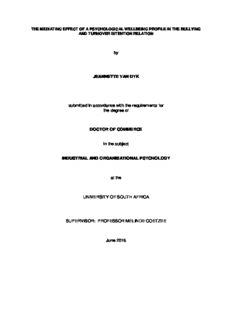
by JEANNETTE VAN DYK submitted in accordance with the requirements for the degree of

2010 Admission
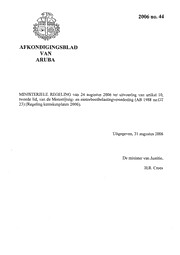
Afkondigingsblad van Aruba 2006 no. 44

Masters in Digital Marketing

Ungleichheit Warum wir nicht alle gleich viel haben müssen

By Cracky, Abe's Nominated

Bon Dia Aruba (21 Januari 2006)

Matheson, Richard - Hell House

C-3PO: Tales of the Golden Droid

C++ AMP. Построение массивно параллельных программ с помощью Microsoft Visual C++.

Spezielle Magenchirurgie

Tartine Book № 2

Greek Government Gazette: Part 2, 1993 no. 450
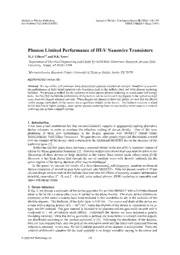
DTIC ADA464547: Phonon Limited Performance of III-V Nanowire Transistors
